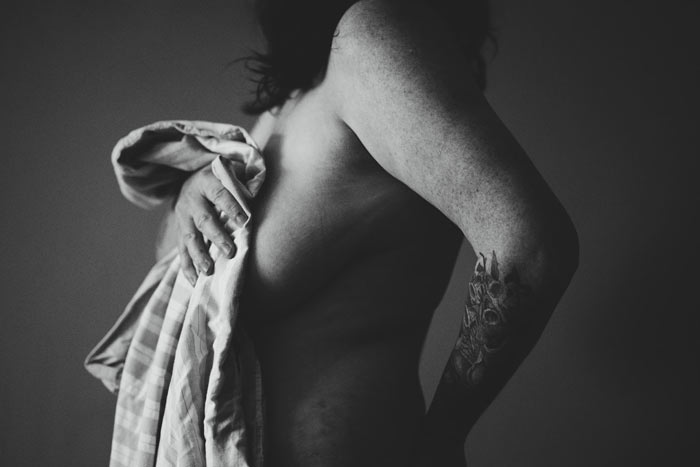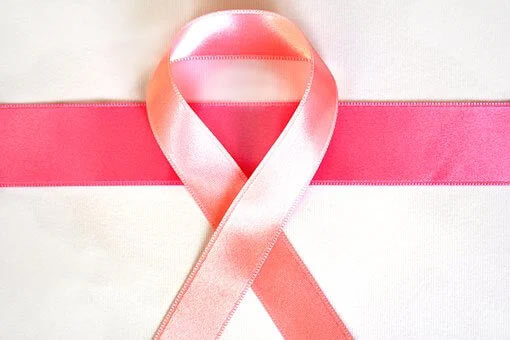
While there is no cure for lymphedema, there are very effective treatments and support you can find for your symptoms. We’re sharing everything you need to know about the links between lymphedema and breast cancer, and reviewing some potential symptoms of lymphedema after breast cancer.
The word edema is a medical word which means swelling, and swelling caused by excess lymph fluid is called lymphedema. Lymphedema can occur after a surgery is performed in an area containing lymph nodes, such as under the arms, and will only affect the treated body side. Early identification and proper treatment can help prevent the condition from progressing , resulting in an improved quality of life for breast cancer patients living with lymphedema.
Breast Cancer Connection
Up to 40% of women treated for breast cancer will develop lymphedema. Breast cancer surgery requires the removal of the axillary lymph nodes located under the arm. A side-effect of breast cancer and/or radiation therapy is an abnormal swelling of the lymph nodes, also known as lymphedema.
According to a study at the American College of Surgeons, about 90% of women who develop lymphedema do so within three years of receiving breast cancer treatment.
Signs and Symptoms of Lymphedema After Breast Cancer and Radiation Therapy
There are many signs and symptoms to look for concerning lymphedema resulting from breast cancer and or radiation therapy, which include the following:
- Swelling – This symptom can occur in the arm or fingers and range from mild to severe, making the arm or fingers challenging to use.
- Restricted Range of Motion – One of the most significant motion restrictions is shoulder abduction, sometimes less than 170 degrees.
- Having a Feeling of Heaviness – Due to the blockage of lymphatic drainage, a feeling of heaviness and being weighed down can occur in the affected arm.
- Pitting of the Skin – This happens when light pressure is applied, and the swelled area leaves an imprint.
- Chronic Infections – Infections that won’t go away or continue to reoccur in the same place.
Causes of Lymphedema
Lymphedema is caused by impairment of the lymphatic system. The lymphatic system rids the body of waste products as well as fighting infections. This intricate system consists of lymph nodes and lymph vessels.
- Lymph vessels – Transport fluid called lymph to the nodes.
- Lymph nodes – Filter out waste products and bacteria, but they can also filter out cancer cells that have spread from the breast area.
Lymphedema occurs when the lymph vessels are unable to drain the lymph fluid adequately. Lymphedema can be caused by either a primary source when it happens on its own, or secondary when caused by another disease or condition, such as lymphedema in breast cancer patients.
Primary lymphedema is also known as congenital lymphedema, and is evident at birth or shortly after puberty. This type is rare and generally affects 1 in every 6,000 people.
Secondary lymphedema is far more common, and the causes include:
- Surgery – When lymph nodes and vessels are injured or removed, it can cause lymphedema to occur.
- Injury to lymph nodes can take place during surgery involving blood vessels in limbs.
- Removal of lymph nodes happens when checking for the spread of breast cancer.
- Cancer – If cancer cells block the lymphatic drainage system, the result can be lymphedema.
- Radiation Treatment for Cancer – Scarring and inflammation of the lymph nodes and vessels can occur due to radiation.
- Infection – When lymph nodes become infected, it can restrict the flow of lymph fluid resulting in lymphedema.
Over time, if poorly treated, lymphedema can result in several complications, including pain, infections, disability, and in some cases, even death.
Risk Factors for Lymphedema Symptoms
After breast cancer treatment, the risk for lymphedema goes up. Secondary factors can also contribute to an increased likelihood of lymphedema. These secondary factors include:
- Excess weight or obesity
- Psoriatic or rheumatoid arthritis
- Older age

Prevention and Treatment of Lymphedema
When undergoing breast cancer treatment, it’s important to check with your doctor whether your lymph nodes will be involved.
If radiation treatment is needed, ask if the radiation will be pointed at any areas that involve the lymph nodes or lymphatic vessels.
In your healing journey as a breast cancer patient, there are things you can do to prevent lymphedema from progressing.
- Protect the affected arm – Avoid injuring the affected arm as cuts and burns can lead to infection.
- Rest the affected arm – After cancer treatment, it is good to stretch and do any arm exercises suggested by the doctor, but try to avoid other strenuous activities.
- Elevate the affected arm – Whenever possible, elevating the affected arm above the heart level is strongly advised.
- Maintain a healthy weight – Incorporate a more nutritional eating plan, along with daily exercise to help with weight management and encourage blood flow through increased circulation.
There are ways to reduce swelling and control the painful symptoms of lymphedema after breast cancer.
- Decongestive Therapy – Complete decongestive therapy (CDT) consists of four parts:
- Manual lymph drainage is a specific type of massage technique that stimulates the flow of lymph fluid. This category of massage should be performed by a trained professional.
- Compression therapy is when you bandage the arm; helping stimulate the lymph fluid to flow back upward. The wrapping should be tighter toward the fingers and gradually get looser as you ascend upward.
- Lymph drainage exercises are specific movements that can encourage lymphatic drainage. These exercises should not be strenuous, but instead, they should focus on mild contractions of the arm muscles.
- Skincare – Avoiding skin damage is essential to prevent infections from occurring.
- Keep skin moisturized daily to prevent chapping or chafing.
- Use insect repellent to avoid bites and stings
- Avoid sun damage by using SPF 50
- Wear gloves when performing activities that may injure the skin, such as gardening, working with tools, and washing the dishes.
There are definite links between breast cancer and lymphedema. But, even though there is no cure for lymphedema, there are things you can do to reduce your risk and effectively manage your symptoms.
The links between breast cancer and lymphedema do not have to bind your life. Being aware and taking the necessary precautions can help you reduce discomfort and live a healthy, inspired life.

